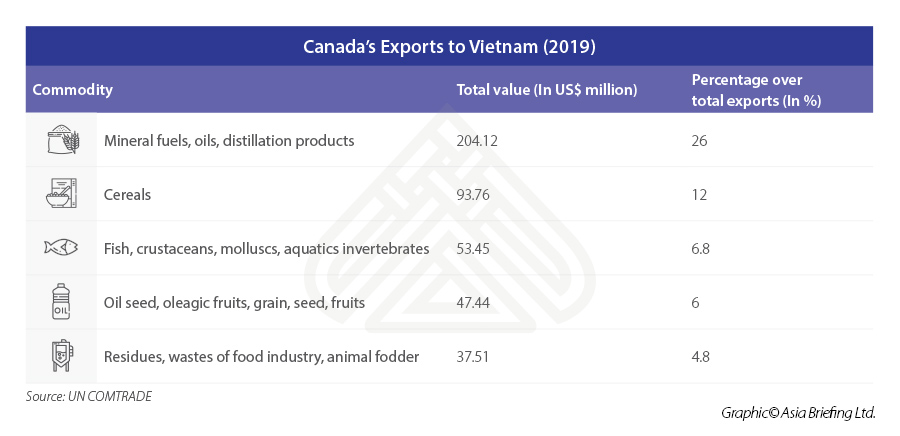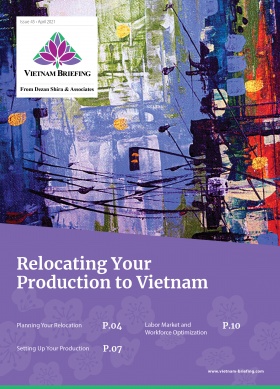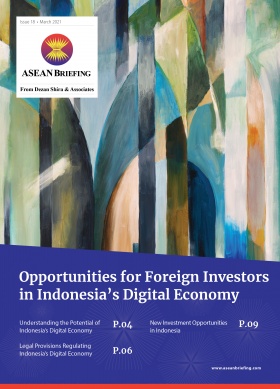Vietnam and Canada Trade: Leveraging the CPTPP
- Vietnam-Canada trade relations reached almost US$9 billion in 2020, an all-time high, thanks in part to the Comprehensive and Progressive Agreement for Trans-Pacific Partnership (CPTPP) signed in 2018.
- The CPTPP aims at promoting trade and maintaining open markets between member countries representing close to 13.4 percent of the world’s GDP.
- Looking forward to bilateral trade between Canada and Vietnam, Canadian investors should be proactive, gain sufficient knowledge about the current tax and regulations in Vietnam, and also about the Vietnamese market and economic landscape to achieve the best possible return on investment.
Vietnam-Canada trade relations reached almost US$9 billion in 2020, an all-time high, thanks in part to the Comprehensive and Progressive Agreement for Trans-Pacific Partnership (CPTPP) signed in 2018.
The CPTPP aims at promoting trade and maintaining open markets between member countries representing close to 13.4 percent of the world’s GDP.
Looking forward to bilateral trade between Canada and Vietnam, Canadian investors should be proactive, gain sufficient knowledge about the current tax and regulations in Vietnam, and also about the Vietnamese market and economic landscape to achieve the best possible return on investment.
As one of the largest free trade agreements in the world, businesspeople in Canada will find greater transparency in emerging markets, along with a wider array of competitive investment and trade options across the Asia-Pacific.With Vietnam already Canada’s largest trading partner in the region, the CPTPP changed the scope of Canada-Vietnam relations, particularly for Canadian businesses that want to participate in Vietnam’s current growth trajectory.
The CPTPP and Canada
Since the CPTPP agreement entered into force, Canada was the only G7 nation to have free trade access in North America, Europe, and the Asia Pacific.
The terms and conditions outlined in the CPTPP create a framework for trade that enables greater market access between member states. Ever since the agreement was ratified, the elimination of tariffs abroad has been stimulating Canadian foreign business activities.
More specifically, the CPTPP benefits Canadian corporations by eliminating tariffs on 99 percent of current Canadian exports to other member nations in the agreement. Further, the agreement also simplifies procedures for permitting goods through customs, enhancing transparency during trade activities, hence improving the Canadian export and import landscape as a whole.
Vietnam and Canada trade relations
According to the Vietnam Chamber of Commerce and Industry (VCCI), the CPTPP brought about impressive trade outcomes between Vietnam and Canada since the agreement came into effect.
The CPTPP establishes duty-free access for trade in goods between Canada and Vietnam, along with the elimination of tariffs for Canada in crucial export areas. The agreement also serves to help Vietnamese consumers purchase high-quality products from Canada at affordable and reasonable prices.
Canada has eliminated 94 percent of tax lines for Vietnamese imports, and Vietnam has eliminated approximately 66 percent of tax lines for Canadian imports. The Vietnamese market share in Canada is 1.1 percent in Canada, compared to 3.1 percent in Japan, 1.9 percent in Australia, and 1.6 percent in New Zealand.
This demonstrates further room for improvement and opportunities between Vietnam and Canada to further bolster trade activities between the two countries.
Bilateral trade landscape
In 2020, bilateral trade between Canada and Vietnam reached a figure of US$8.9 billion, up 12 percent from 2019, and 37 percent from 2018. On this issue, the VCCI Chairman claimed that though the bilateral trade growth rate slowed down in 2020 due to the COVID-19 pandemic, it still remains to be twice the figure of Vietnam’s export average.
Since 2015, Vietnam has been Canada’s largest trading partner in the ASEAN region. In 2020, Vietnam was the second-largest destination in ASEAN for Canadian agricultural and seafood products.
Further, statistics reveal that the total value of Vietnamese exports to Canada increased by 16 percent in 2020, with major growth for mobile phones, footwear, furniture, and apparel. These benefits are expected to continue to grow as the CPTPP agreement expands and more member nations such as the UK join the agreement in the future
During January and February of 2021, Vietnamese exports to Canada increased by 14.8 percent, reaching US$663.45 million. This is a 78.67 percent increase compared to the same period in 2018 before the CPTPP came into effect.
Major Canadian import industries
The Canadian industry is competitive in some of Vietnam’s top import areas, such as telecommunication equipment, wood products, and agri-fishery products. These products represent new opportunities for Canadian businesses.
Canada’s top five exports to Vietnam in 2019 were mineral fuels (26 percent, US$ 204.12 million), cereals (12 percent, US$ 93.76 million), fish and aquatics (6.8 percent, US$ 53.45 million), oilseed and fruits (6 percent, US$ 47.44 million), and residues (4.8 percent, US$37.51 million).
However, Canada’s top exports to Vietnam do not contribute directly to Vietnam’s growing infrastructure system. Although machines are among Canada’s top exports, it represents only a fraction of the amount that China and South Korea export into the country.
Opportunities for Canadian investors
Investors that target sectors that align with Vietnam’s development goals, such as the shift towards sustainability, are the most viable long-term investment projects. For example, former Prime Minister Nguyen Xuan Phuc publicly requested Canadian support in solar energy to develop clean technology, where investment from Canada remains quite low, despite its competitiveness in the sector.
On similar grounds, the government of Canada has brought attention to emerging opportunities such as the education industry in Vietnam. Vietnam spends US$3 billion per year on overseas study.
Similarly, information and communications technology (ICT) has become the foundation of Vietnam’s modern development: the 4G network was established in 2017, leading to the growth of big data and analytics, as well as finance and technology. Meanwhile, Vietnam’s development continues to create opportunities for Canadian businesses in infrastructure, planning, and design as new materials, construction, operation, and project management will be required.
Through the two-year period that the CPTPP came into effect, Canadian businesses have been obtaining a competitive advantage. While Vietnam holds a prominent place among other ASEAN countries in relation to Canada, exploring opportunities that already exist in Vietnam is worthwhile given the progress already made.
However, successful integration into the market requires a strategic approach to Vietnam’s low costs, young and growing population, and increasingly open economy. In addition to identifying key industries, Canadian investors should become familiar with the current legal and tax environment. Canadian business leaders can play a key part in the development of the modern economy in Vietnam if they become more proactive.
About Us
ASEAN Briefing is produced by Dezan Shira & Associates. The firm assists foreign investors throughout Asia and maintains offices throughout ASEAN, including in Singapore, Hanoi, Ho Chi Minh City, and Da Nang in Vietnam, Munich, and Esen in Germany, Boston, and Salt Lake City in the United States, Milan, Conegliano, and Udine in Italy, in addition to Jakarta, and Batam in Indonesia. We also have partner firms in Malaysia, Bangladesh, the Philippines, and Thailand as well as our practices in China and India. Please contact us at asia@dezshira.com or visit our website at www.dezshira.com.
- Previous Article Singapore and Thailand Launch Integrated Real Time Payment Systems
- Next Article Personal Income Tax in Vietnam: Exemptions and Reductions








